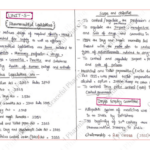Antihypertensive agents:
Classification and Synthesis
SUBJECT- PHARMACEUTICAL CHEMISTRY-VII (4T2)
JAGDEESH AHIRWAR
ASST. PROF. (CONTRACT)
SOS in Pharmaceutical Sciences, Jiwaji University,
Gwalior
Classification
1. Diuretics-
Thiazides: Hydrochlorothiazide Indapamide
High ceiling: Furosemide.
K+ Sparing: Spironolactone Amiloride
2. ACE inhibitors-
Captopril Enalapril Ramipril
3. Angiotensin (AT1 receptor) blockers-
Losartan Telmisartan Valsartan
4. Direct renin inhibitor-
Aliskiren
5. Calcium channel blockers-
Amlodipine Felodipine Nicardipine Verapamil
6. β- Adrenergic blockers-
Propranolol Metoprolol Atenolol
7. β+ α- Adrenergic blockers-
Labetalol Carvedilol
8. α-Adrenergic blockers-
Prazosin Terazosin Doxazosin
9. Central sympatholytic-
Clonidine Methyldopa
10. Vasodilators-
Hydralazine Minoxidil Diazoxide
Synthesis of Methyldopa
Structure-
IUPAC Name- α-methyl-3-hydroxy-L-tyrosine
Properties-
• Methyldopa appears as colourless or almost colourless crystals or white to
yellowish-white fine powder.
• It is soluble in water Isopropanol, ethanol, it is hydroscopic in nature and
decomposed by oxidizing agents.
• Absorption from the gastrointestinal tract is variable but averages approximately
50%.
• Methyldopa is extensively metabolized. Approximately 70 percent of the drug which
is absorbed is excreted in the urine as methyldopa and their conjugates.
• Antihypertensive effect develops over 4–6 hours and lasts for 12–24 hours.
Synthesis
Mechanism of action
Methyldopa is a prodrug and is metabolized in the central nervous system. The
antihypertensive action of methyldopa seems to be attributable to its conversion into
alpha methyl norepinephrine, which is a potent alpha-2 adrenergic agonist that binds
to and stimulates potent central inhibitory alpha-2 adrenergic receptors. This results in
a decrease in sympathetic outflow and decreased blood pressure.
Uses-
• Adrenergic alpha-Agonists; Antihypertensive Agents; Sympatholytic
• Methyldopa is indicated in the treatment of moderate to severe hypertension,
including that complicated by renal disease.
• Methyldopa is an effective antihypertensive agent when given in conjunction with
a diuretic.
• Methyldopa is contraindicated in patients with active hepatic disease, such as
acute hepatitis and active cirrhosis.
Dose-
• The usual initial of methyldopa is dose is 250-500 mg twice daily.
Synthesis of Propranolol
Structure-
IUPAC Name- 1-(naphthalen-1-yloxy)-3-[(propan-2-yl)amino]propan-2-ol
Properties-
• Propranolol is well absorbed after oral administration, but has low bioavailability
due to high first pass metabolism in liver. Bioavailability of propranolol is higher
when it is taken with meals because food decreases its first pass metabolism.
• The plasma half-life of propranolol is 3 to 6 hours.
• Propranolol undergoes side chain oxidation to α-naphthoxylactic acid, ring
oxidation to 4’-hydroxypropranolol, or glucuronidation to Propranolol
glucuronide.
• 91% of an oral dose of propranolol is recovered as 12 metabolites in the urine.
• The elimination half life of propranolol is approximately 8 hours.
Synthesis
Mechanism of Action-
Propranolol inhibit adrenergic responses mediated through the β receptors. Propranolol is a
synthetic, nonselective beta-adrenergic receptor blocker with antianginal, antiarrhythmic,
antihypertensive properties. Propranolol competitively antagonizes beta-adrenergic receptors,
blocking of these receptors leads to vasoconstriction, inhibition of angiogenic factors like
vascular endothelial growth factor (VEGF) and basic growth factor of fibroblasts, induction of
apoptosis of endothelial cells, as well as down regulation of the renin-angiotensin-
aldosterone system, resulting to reduction in cardiac output.
Uses-
Adrenergic beta-antagonists are used for treatment of hypertension, cardiac arrhythmias,
angina pectoris, glaucoma, migraine headaches, and anxiety.
Dose-
Oral—10 mg BD to 160 mg QID (average 40–160 mg/ day). Start with a low dose and
gradually increase according to need;
i.v.—2 to 5 mg injected over 10 min with constant monitoring.
It is not injected s.c. or i.m. because of irritant property
Thank You …










